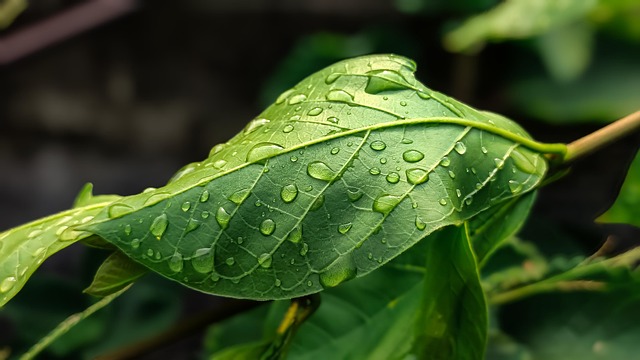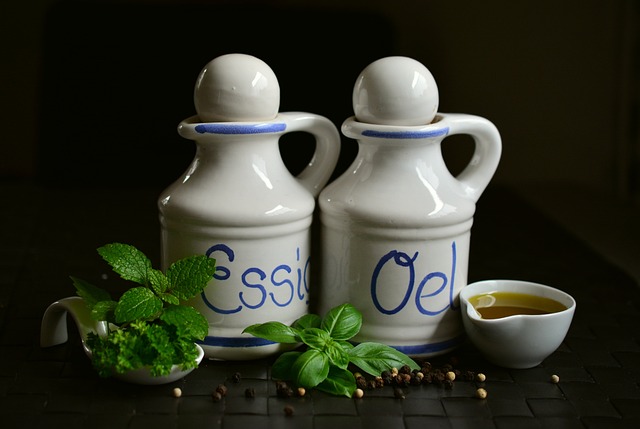This text explores the benefits and methods of natural mold removal as an alternative to conventional chemicals. Mold thrives in damp, dark spaces, posing health risks through spore release. Natural remedies like vinegar, baking soda, essential oils, and lemon juice disrupt mold growth, eliminate spores, and promote a healthier environment. These affordable ingredients offer a safe, eco-friendly approach that's gaining popularity among homeowners concerned about both health and sustainability. The article provides a DIY guide for using these natural elements and discusses the ongoing debate between natural mold removal methods and commercial products.
“Uncovering the truth about homemade mold removers: Do they truly stand up to their commercial counterparts? This comprehensive guide explores the effectiveness of natural, at-home solutions for addressing mold growth. We delve into the science behind mold, its potential health impacts, and why choosing a natural approach could be beneficial.
Learn about powerful, yet simple, ingredients effective in combating mold, and follow our easy steps to create your own cleaner. We’ll also compare homemade with store-bought options, helping you make an informed decision for safe, efficient mold removal.”
- Understanding Mold Growth and Its Impact
- The Benefits of Natural, Homemade Mold Removers
- Common Ingredients for Effective Mold Removal at Home
- Step-by-Step Guide to Creating and Using Homemade Solutions
- Comparison: Homemade vs. Commercial Mold Removers
Understanding Mold Growth and Its Impact

Understanding mold growth is crucial when considering effective natural mold removal methods. Mold thrives in damp, dark environments, often hidden behind walls or under flooring, making it difficult to detect until significant damage has occurred. It can grow on various surfaces, including wood, drywall, and fabric, releasing spores that can cause health issues for vulnerable individuals. The impact of mold isn’t just structural; it can lead to respiratory problems, allergies, and even neurological symptoms in severe cases. This is why prompt action is essential when addressing mold infestations.
Natural mold removal offers an appealing alternative to commercial products, especially for those prioritizing eco-friendly solutions. Homeowners often turn to ingredients like vinegar, baking soda, and essential oils due to their affordability and perceived safety. These natural remedies can effectively combat mold by disrupting its growth cycle and eliminating spores, providing a healthier long-term solution.
The Benefits of Natural, Homemade Mold Removers

Many people are turning to natural, homemade mold removers for a safer and more environmentally friendly approach to addressing mold issues in their homes. Unlike commercial products that often contain harsh chemicals, natural alternatives offer several advantages. Firstly, they are typically non-toxic and gentle on both your skin and respiratory system, making them ideal for areas with poor ventilation or for those with sensitive health conditions. Secondly, natural mold removers are cost-effective, allowing you to create an effective solution without breaking the bank.
Moreover, using homemade remedies promotes sustainability by reducing plastic waste associated with commercial products. Natural ingredients like vinegar, baking soda, and essential oils not only effectively combat mold but also leave a refreshing scent behind. This eco-friendly approach to mold removal is gaining popularity as folks become more conscious of their impact on the environment while still achieving effective results in their homes.
Common Ingredients for Effective Mold Removal at Home

When it comes to tackling mold at home, many people turn to natural remedies as a preferred and cost-effective solution. One of the key aspects of successful natural mold removal is understanding the common ingredients that are highly effective against this unwanted growth. Often found in household items, these ingredients can be mixed and matched to create powerful cleaning solutions without harsh chemicals.
Baking soda, vinegar, lemon juice, and essential oils top the list as popular choices. Baking soda acts as a natural abrasive, helping to scrub away mold and its spores. Vinegar, with its acetic acid content, is known for its antimicrobial properties, breaking down the cell walls of mold and preventing further growth. Lemon juice, rich in citric acid, offers similar benefits while also adding a refreshing scent. Essential oils, such as tea tree oil or eucalyptus, enhance the cleaning power by repelling molds and leaving a pleasant aroma. Combining these natural elements can result in an efficient and safe mold removal system for various surfaces around the home.
Step-by-Step Guide to Creating and Using Homemade Solutions

Creating homemade mold removers can be a cost-effective and eco-friendly alternative to store-bought options. Here’s a step-by-step guide to help you get started. First, gather essential natural ingredients like vinegar, baking soda, lemon juice, or tea tree oil. These powerful agents are known for their antimicrobial properties, making them effective in tackling mold growth. Next, mix these ingredients according to your preferred recipe. For instance, a popular mixture involves combining equal parts vinegar and water with a few drops of tea tree oil. You can also add baking soda for added scrubbing power. Once mixed, transfer the solution into a spray bottle or clean container. Before applying, ensure the area is well-ventilated to avoid inhaling any potent fumes. Spray the homemade solution directly onto the moldy surface and let it sit for several minutes to allow the natural enzymes to take effect. Then, use a soft brush or cloth to gently scrub the area, removing any visible mold. Rinse thoroughly with clean water and dry completely to prevent future mold growth.
Comparison: Homemade vs. Commercial Mold Removers

When it comes to tackling mold, many homeowners opt for homemade solutions over commercial products, questioning their effectiveness. A key comparison lies between natural mold removal methods and conventional removers. Homemade options often involve ingredients like baking soda, vinegar, and essential oils—all known for their antimicrobial properties. These natural alternatives are not only cost-effective but also environmentally friendly, making them appealing choices for those seeking eco-conscious solutions.
However, commercial mold removers offer a range of potent chemicals designed specifically to combat mold growth. While they may be more powerful, there are concerns about their potential health risks and the environmental impact of synthetic compounds. The debate rages on—are homemade remedies sufficient or do commercial products provide a more reliable, albeit potentially harmful, solution?
